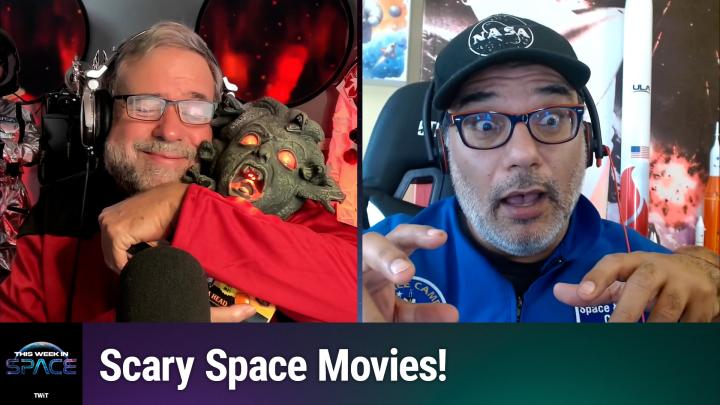Asteroid 'Busters' Widen Search for Earth-Threatening Objects
PRAGUE, Czech Republic (AP) -- Astronomers are stepping upthe global effort to scan the skies for ''near-Earth objects'': asteroids andcomets on a potential collision course with the planet and big enough to pack adeadly punch.
TheInternational Astronomical Union said Thursday it has set up a special taskforce to broaden and sharpen its focus on impact threats. Experts say there arean estimated 1,100 known objects that are 1 kilometer (about a half-mile) orwider across--large enough to not only take out a sizable European country butthreaten the entire world.
"Thegoal is to discover these killer asteroids before they discover us," saidNick Kaiser of the University of Hawaii's Institute for Astronomy, whosePan-STARRS program will train four powerful digital cameras on the heavens towatch for would-be intruders.
NASA'sSpaceguard Survey, which already has identified 800 of the larger objects andhas 103 on an impact risk watchlist, wants to find 90 percent by the end of2008. The U.S. Congress has asked the space agency for a plan to comb thecosmos for faint objects as small as 140 meters (153 yards) across and logtheir position, speed and course by 2020.
Astronomerswill have their work cut out for them: Experts say there are about 100,000 suchobjects hidden among the haze of stars, and as many as 1 million half thatsize.
One knownas the Tunguska object slammed into remote central Siberia in 1908, unleashingenergy equivalent to a 15-megaton nuclear bomb that wiped out 60 million treesover a 2,150-square-kilometer (830-square-mile) area. Had it hit a populatedarea, the loss of life would have been staggering.
GiovanniValsecchi of Italy's National Institute of Astrophysics said the ultimate aimis a permanent warning system like those that now monitor the Pacific fortsunamis and keep tabs on volcanoes and earthquake zones. The idea: Give theworld enough lead time to come up with a workable response to a confirmedthreat, such as sending up a rocket to deflect an Earth-bound object or a spacecraftto nudge it into a harmless orbit.
Breaking space news, the latest updates on rocket launches, skywatching events and more!
"Rightnow, unfortunately, there are no 'asteroid busters' or hotlines. Who ya gonnacall?" said Andrea Milani Comparetti, a professor of mathematics at the University of Pisa.
The IAUoffered some reassurance Thursday about 99942 Apophis, a smallish asteroid thatwill come within just 18,640 miles (30,000 kilometers) of Earth when it whizzesby in 2029. That's closer than many commercial satellites, and 220,000 miles(354,000 kilometers) nearer than the moon.
Last year,scientists were concerned Apophis could come even closer in another fly-by in2036, with a 1-in-5,500 chance of striking Earth with enough energy to wipe out New York City and its suburbs. However, Comparetti said the latestobservations suggest it has only a 1-in-30,000 chance of hitting Earth, andthat another initially alarming object, 2004 VD17, now has 1-in-24,000 odds.
"It'snot particularly worrying," he said.
Althoughclose encounters are unnerving, they give astronomers a unique opportunity toget a better glimpse of asteroids and comets, the leftover building materialsof the universe, and gain a better understanding of the origins of the solarsystem.
But wideningthe search for threatening objects creates a problem: Discoveries of potentialthreats could become commonplace, either creating unnecessary panic andconfusion or lulling the public into a false sense of complacency.
"We'renow going to be finding such objects once a week instead of once a year,"said David Morrison, a NASA scientist who will chair the new IAU task force onimpact threats.
Todetermine the odds of a collision, astronomers surround a target object with aswarm of 10,000 ''virtual asteroids'' and map out their preliminary orbits. Ifone is found to be on a path toward Earth, it's given a 1-in-10,000 probabilityof impact, though _ as it did in Apophis' case _ fresh data can ease those oddsconsiderably.
"Onlyin Hollywood do asteroids arbitrarily change orbits," Morrison said.
Ultimately,Valsecchi conceded, mankind may not be able to dodge every cosmic bullet.Earth's craters bear silent witness to what can happen.
"It'sthrough collisions that planets are born," he said, "and throughcollisions that planets die."
Join our Space Forums to keep talking space on the latest missions, night sky and more! And if you have a news tip, correction or comment, let us know at: community@space.com.
